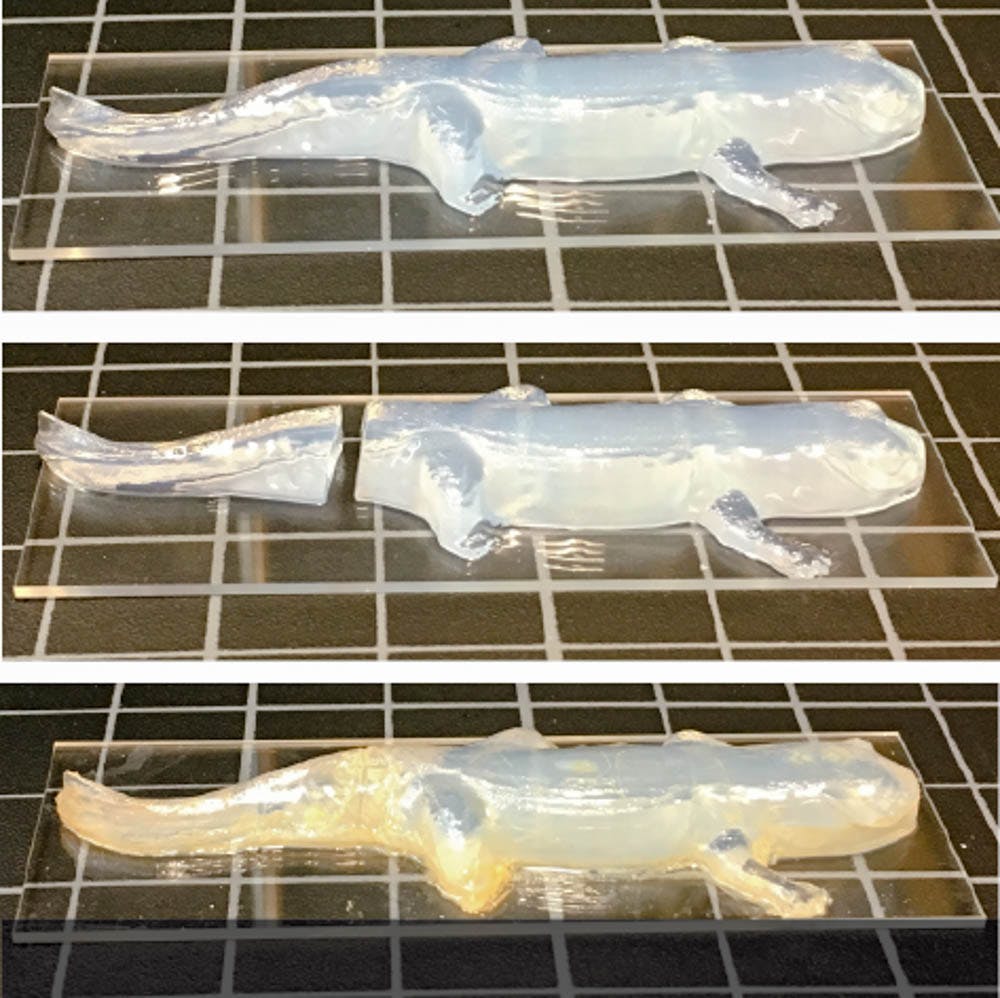University researchers have brought the childlike appeal of LEGO blocks to the chemistry lab — a newly invented material can stick to itself, be molded to form a structure and, when needed, can adapt to reshape itself, just like a set of LEGOs built into various shapes.
Using a light-directed 3D printer to combine two materials, known as polymers, the team created a dynamic hydrogel that is adaptable, flexible and self-adhesive. A polymer is a molecular structure composed of smaller units bonded together in a long chain. The researchers behind this project used two polymers in their hydrogel composition: one to provide a stiff structure and another that can bend and self-adhere.
This material allows researchers to pattern their own structures with ease. Rather than printing a shape or requiring machinery, scientists could eventually receive this gel and use it for a variety of purposes without additional engineering. “I think there’s an appeal in that the hydrogel allows you to just do it yourself. Our dream is to design a set of LEGOs. As a kid, you don’t need to know anything given two LEGOs. You don’t need any special equipment; you don’t need glue; you don’t need a complex computer. That’s our inspiration,” said Ian Wong, assistant professor of engineering.
“We want to make LEGO blocks that you can send to anyone.”
Not only did the team create LEGO-like building blocks, they designed blocks with miniaturized plumbing inside them. This type of technology could be used to extract chemicals from human samples, such as blood or urine, Wong said.
“Most medical devices work because of external forces or vibrations. So, if you have something that can adhere by itself, that’s going to be very interesting for the medical device industry. I could particularly see this (hydrogel) used for drug testing devices,” said Associate Professor at Harvard Medical School Shrike Zhang, who was not involved with the study.
The team also showcased other applications of their hydrogel in the research paper. In one demonstration, the team severed the tail of a salamander modeled from the hydrogel. By adding ions to the material, the researchers can then attach the tail back to the main body using the hydrogel’s self-adhesive properties.
In another example, the team designed a soft “gripper” that could pick up small test weights, alluding to applications in robotics. “We are also interested in having a soft robot that changes shape depending on its environment,” Wong said.
To make the hydrogel material, a 3D printer exposes the liquid polymer combination to light, which triggers two types of bonds — ionic and covalent — to turn the liquid into a solid through a process called crosslinking, Wong said.
The hydrogel’s combination of ionic and covalent bonds makes it unlike other materials, as the covalent bonds provide a rigid structure and the ionic bonds allow the material to reshape or self-adhere, given a trigger. When charged particles, called ions, are added to the hydrogel, the material can self-adhere. Remove the ions, and the hydrogel unsticks from itself.
Thomas Valentin, PhD candidate in biomedical engineering and the paper’s lead author, conceived the idea for the project. “(Tom is) excited about building things with his hands, so he was naturally drawn to 3D printing,” Wong said. “He was curious whether we could print a responsive material that changes according to external stimuli.”
The team decided to test this combination of polymers after conducting an initial survey of the literature. “We hoped that by combining them into a dual-polymer hydrogel, we could see some of the same functionalities,” said Eric DuBois ’20, an undergraduate student in the Wong Lab who played a significant role in the material’s development and the writing of the paper.
“Since Tom is graduating now, I think that this particular hydrogel might be put to rest. That said, we currently have a graduate student working with a similar type of hydrogel, looking to embed cells in 3D and observe how they move and change in response to changes in the structure,” DuBois said.
The Wong Lab is a biomedical engineering group generally interested in the development of new and innovative biomaterials. Wong added that it is unlikely that his team will cease to conduct research regarding these hydrogels anytime soon.





